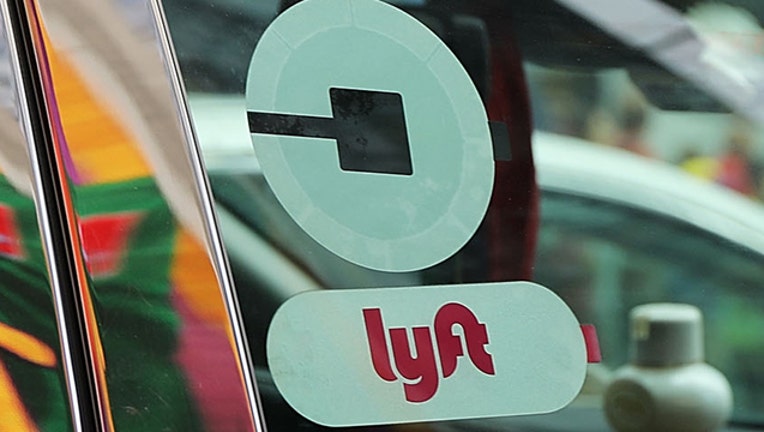San Francisco County hardest hit by congestion from ride-hailing, study conducted by Uber, Lyft find

A Lyft ride hailing vehicle moves through traffic in Manhattan on July 30, 2018 in New York City. (File photo by Spencer Platt/Getty Images)
San Jose, Calif. (KTVU) - Ride-hailing companies Lyft and Uber are finally admitting that their services lead to an increase in city-traffic congestion, in a research report published Monday by transportation consultancy Fehr & Peers.
The report, sponsored by Uber and Lyft compared the VMT (vehicle miles traveled) share of private vehicles and TNCs (Transportation Network Company), industry speak for ride-hailing companies like Lyft and Uber in Boston, Chicago, Los Angeles, San Francisco, Seattle, and Washington, DC.
While TNC’s share ranged from 1-3 percent at the metropolitan area level, at the core county level, or the city center, its share ranged between 2-13 percent. Uber and Lyft make up as much as 13.4 percent of all vehicle miles in San Francisco County, the highest in the six regions examined. TNCs accounted for a significant amount of VMTs in the core urban areas of Boston (8 percent) and Washington, DC (7.2 percent).
The research marks a U-turn from their previous position that they reduce congestion through features like ride-sharing. Both Uber and Lyft published blog posts to provide context and deflect criticism.
“The research shows that despite tremendous growth over the past decade, TNC use still pales in comparison to all other traffic,” Chris Pangilinan Uber’s head of global policy for public transportation, wrote in a blog post published Monday. “although TNCs are likely contributing to an increase in congestion, its scale is dwarfed by that of private cars and commercial traffic.”
“Research has also found that the peak activity of rideshare trips take place outside of commute hours, such as nights and weekends,” writes Peter Day, head of policy research analytics at Lyft. “During these hours, rideshare plays an important role in reducing impaired driving, and providing a reliable transportation option when public transit may not be running or have infrequent service.”
Prior independent research has already established a connection between TNCs and vehicular traffic congestion – a 2018 report by the San Francisco Country Transportation Authority said that TNCs accounted for approximately 50 percent of the rise in congestion in San Francisco between 2010 and 2016, as indicated by three congestion measures: vehicle hours of delay, vehicle miles traveled, and average speeds.

